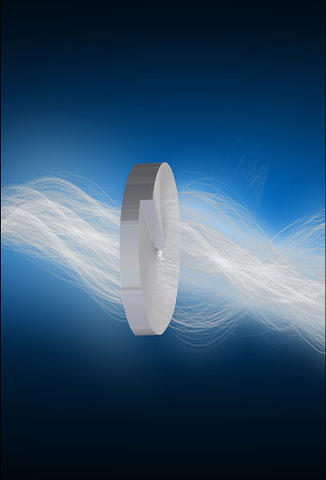
A team of scientists working at the National Institute of Standards and Technology (NIST) has found a way to put a twist on a beam of neutrons—a development that might lead to applications down the road, just like photons and other swirling particles that ultimately were shown to have a practical twist.
The discovery might expand the revelatory power of neutrons, a particle with unique talents that's helping to clarify the molecular structure of complex new materials with technological promise. The team, which includes scientists from NIST as well as Boston University and the University of Waterloo, has published its findings in the current issue of Nature. Their experiments were performed at the NIST Center for Neutron Research (NCNR).
All quantum particles can twist as they travel. Just like electrical charge or magnetism, this twisting also is a quantum property, formally known as orbital angular momentum (OAM). All particles possess OAM. It's easy to imagine, if you think of the familiar flow of water draining from a sink, forming a whirlpool as it travels downward.
While the existence of OAM has been common scientific knowledge for decades, harnessing it only became practical in the 1990s, when physicists learned how to control it in photons. Putting a controlled twist onto the particles in a beam of light has led to several useful applications such as "tweezers" that can pick up a single strand of DNA or filters that screen light from a distant star so that astronomers can spot planets that might be orbiting it.
Neutrons are harder to wrangle. They are electrically neutral, interact weakly with materials, and you need special radiation sources to produce them. But the team has devised a fairly simple way to add a controlled amount of twist to them: Pass neutrons through a customized aluminum plate about the width of a dime. One of the plate's surfaces has a slight spiral, a smooth ramp curving upward somewhat like a snail's shell. The neutron pulses swirl as they emerge from the other side of the plate. And that swirl may turn the neutron into probes for investigating the properties of materials, especially other twisted materials.
"Many molecules are themselves twisted in a particular direction—they have what's called chirality," says Waterloo's Dmitry Pushin, who has worked at the NCNR for several years. "Some rare earth element materials also have rotating magnetic properties. OAM control allows us to pattern the neutron waves in a new way that could help us understand these materials better."
C.W. Clark, R. Barankov, M.G. Huber, M. Arif, D.G. Cory and D.A Pushin. "Controlling Neutron Orbital Angular momentum," Nature, DOI: 10.1038/nature15265, Sept. 24, 2015.

